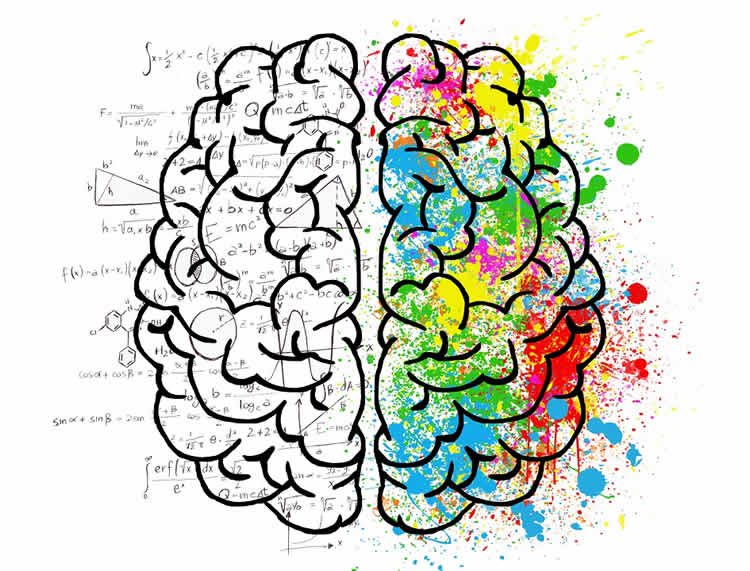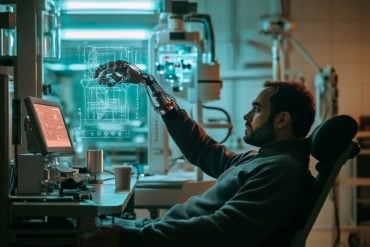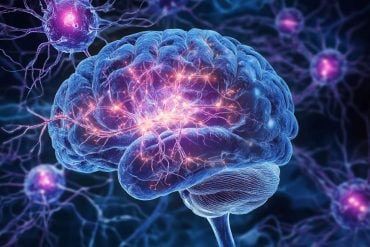Summary: Synchrony between the default mode network and executive control network appear to play an important role in creativity, Harvard researchers report.
Source: Harvard.
It’s often said that creative people see the world differently than the rest of us — and a Harvard researcher is providing one answer why.
Scientists studying brain scans of people who were asked to come up with inventive uses for everyday objects found a specific pattern of connectivity that correlated with the most creative responses. Researchers were then able to use that pattern to predict how creative other people’s responses would be based on their connections in this network. The study is described in a January 15 paper published in the Proceedings of the National Academy of Sciences.
“What this shows is that the creative brain is wired differently,” said Roger Beaty, a Post-Doctoral Fellow in Psychology and the first author of the study. “People who are more creative can simultaneously engage brain networks that don’t typically work together. We also used predictive modeling to show we could predict, with some degree of accuracy, how creative people’s ideas were (based on brain scans) that had already been published.” Beaty and colleagues reanalyzed brain data from previous studies and found that, by simply measuring the strength of connections in these peoples’ brain networks, they could estimate how original their ideas would be.
While the data showed that regions across the brain were involved in creative thought, Beaty said the evidence pointed to three subnetworks — the default mode network, the salience network and the executive control network — that appear to play key roles in creative thought.
The default mode network, he said, is involved in memory and mental simulation, so the theory is that it plays an important role in processes like mind-wandering, imagination, and spontaneous thinking.
“In terms of creativity, we think that’s important for brainstorming,” Beaty said. “But you’re not always going to stumble onto the most creative idea that way, because you might be drawn to something unoriginal from memory, so that’s when these other networks come online.”
The salience network, he said, detects important information, both in the environment and internally. When it comes to creativity, researchers believe it may be responsible for sorting through the ideas that emerge from the default mode network.
Lastly, Beaty said, the executive control network works to help people keep their focus on useful ideas while discarding those that aren’t working.
“It’s the synchrony between these systems that seems to be important for creativity,” Beaty said. “People who think more flexibly and come up with more creative ideas are better able to engage these networks that don’t typically work together and bring these systems online.”
To identify the brain network involved in creativity, Beaty and colleagues recruited a total of 163 volunteers, and used functional magnetic resonance imaging (fMRI) technology to scan their brains as they tried to conceive of creative ideas for everyday objects, like a brick or a knife or a rope.
The team then trained “raters” to review the responses from participants and evaluate how creative their ideas were.
“Creativity is typically defined as the ability to come up with new and useful ideas,” Beaty said. “We correlated the connectivity strength in this network while they were thinking creatively with the quality of their responses.”

Based on the results of that test, Beaty and colleagues developed a predictive model and tested against brain scan data collected for earlier studies on creativity.
“We used already-published data…we found that based on how strong the connections are in this network, we could guess pretty accurately how creative you’re going to be on a task,” Beaty said.
Ultimately, Beaty said he hopes the study dispels some myths about creativity and where it comes from.
“One thing I hope this study does is dispel the myth of left versus right brain in creative thinking,” he said. “This is a whole-brain endeavor.”
It’s also not clear that this can’t be modified with some kind of training. “It’s not something where you have it or you don’t,” he added. “Creativity is complex, and we’re only scratching the surface here, so there’s much more work that’s needed.”
Source: Harvard
Publisher: Organized by NeuroscienceNews.com.
Image Source: NeuroscienceNews.com image is in the public domain.
Original Research: Abstract in PNAS.
doi:10.1073/pnas.1713532115
[cbtabs][cbtab title=”MLA”]Harvard “The Creative Brain is Wired Differently.” NeuroscienceNews. NeuroscienceNews, 23 January 2018.
<https://neurosciencenews.com/creativity-networks-8355/>.[/cbtab][cbtab title=”APA”]Harvard (2018, January 23). The Creative Brain is Wired Differently. NeuroscienceNews. Retrieved January 23, 2018 from https://neurosciencenews.com/creativity-networks-8355/[/cbtab][cbtab title=”Chicago”]Harvard “The Creative Brain is Wired Differently.” https://neurosciencenews.com/creativity-networks-8355/ (accessed January 23, 2018).[/cbtab][/cbtabs]
Abstract
Robust prediction of individual creative ability from brain functional connectivity
People’s ability to think creatively is a primary means of technological and cultural progress, yet the neural architecture of the highly creative brain remains largely undefined. Here, we employed a recently developed method in functional brain imaging analysis—connectome-based predictive modeling—to identify a brain network associated with high-creative ability, using functional magnetic resonance imaging (fMRI) data acquired from 163 participants engaged in a classic divergent thinking task. At the behavioral level, we found a strong correlation between creative thinking ability and self-reported creative behavior and accomplishment in the arts and sciences (r = 0.54). At the neural level, we found a pattern of functional brain connectivity related to high-creative thinking ability consisting of frontal and parietal regions within default, salience, and executive brain systems. In a leave-one-out cross-validation analysis, we show that this neural model can reliably predict the creative quality of ideas generated by novel participants within the sample. Furthermore, in a series of external validation analyses using data from two independent task fMRI samples and a large task-free resting-state fMRI sample, we demonstrate robust prediction of individual creative thinking ability from the same pattern of brain connectivity. The findings thus reveal a whole-brain network associated with high-creative ability comprised of cortical hubs within default, salience, and executive systems—intrinsic functional networks that tend to work in opposition—suggesting that highly creative people are characterized by the ability to simultaneously engage these large-scale brain networks.







